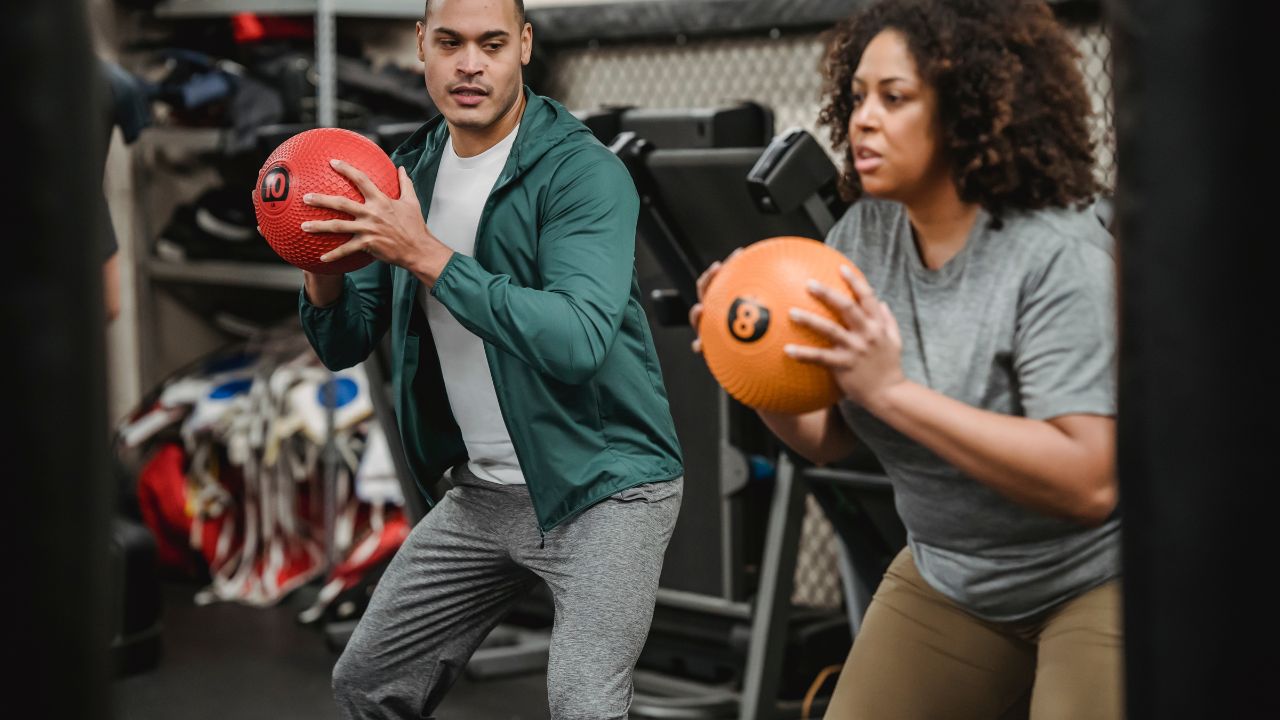
Understanding Functional Fitness
Functional fitness is a type of training that focuses on improving your body's ability to perform everyday activities with ease and efficiency. It involves exercises that mimic real-life movements, such as lifting, pushing, pulling, and squatting. By engaging in functional fitness training, you can enhance your strength, flexibility, endurance, and overall well-being.
Incorporating Strength Training
One of the key components of functional fitness is strength training. Engaging in regular strength training exercises can help you build and maintain lean muscle mass, which is crucial for performing daily tasks and maintaining a healthy metabolism. Some effective strength training exercises include:
- Squats: Squats target your lower body muscles, including your quadriceps, hamstrings, and glutes. They also engage your core muscles for stability.
- Deadlifts: Deadlifts work your entire posterior chain, including your back, glutes, and hamstrings. They help improve your posture and overall strength.
- Push-ups: Push-ups are a classic bodyweight exercise that targets your chest, shoulders, and triceps. They also engage your core muscles for stability.
Aim to incorporate strength training exercises into your routine at least 2-3 times per week, using a combination of bodyweight exercises and resistance training with weights or resistance bands.
Improving Mobility and Flexibility
Mobility and flexibility are essential components of functional fitness. Having good mobility allows you to move your joints through their full range of motion, while flexibility refers to the ability of your muscles to stretch and lengthen. Improving both mobility and flexibility can help reduce your risk of injury and enhance your overall performance in daily activities.
Some effective mobility and flexibility exercises include:
- Yoga: Yoga is a great way to improve both mobility and flexibility. It involves a series of poses and stretches that target different muscle groups and joints.
- Dynamic stretching: Dynamic stretching involves moving your body through a range of motion, rather than holding a static stretch. Examples include leg swings, arm circles, and walking lunges.
- Foam rolling: Foam rolling is a form of self-myofascial release that can help improve flexibility and reduce muscle tension. It involves using a foam roller to apply pressure to specific muscle groups.
Aim to incorporate mobility and flexibility exercises into your routine on a daily basis, even if it's just for a few minutes at a time.
Enhancing Endurance and Cardiovascular Health
Endurance and cardiovascular health are important components of functional fitness. Having good endurance allows you to perform activities for longer periods of time without getting fatigued, while cardiovascular health refers to the health of your heart and blood vessels.
Some effective endurance and cardiovascular exercises include:
- Running: Running is a great way to improve your endurance and cardiovascular health. Start with short distances and gradually increase your mileage over time.
- Cycling: Cycling is a low-impact exercise that can help improve your endurance and cardiovascular health. It's also a great way to explore your surroundings and enjoy the outdoors.
- Swimming: Swimming is a full-body workout that can help improve your endurance and cardiovascular health. It's also gentle on your joints, making it a great option for those with joint pain or injuries.
Aim to incorporate endurance and cardiovascular exercises into your routine at least 3-5 times per week, for at least 30 minutes at a time.
Focusing on Core Stability
Core stability refers to the strength and control of the muscles in your abdominal and lower back region. Having a strong and stable core is essential for performing daily activities with ease and preventing injury.
Some effective core stability exercises include:
- Planks: Planks are a great way to improve your core stability. They involve holding your body in a straight line, supported by your forearms and toes.
- Russian twists: Russian twists are a dynamic core exercise that involves rotating your torso while holding a weight or medicine ball.
- Bicycle crunches: Bicycle crunches are a variation of the traditional crunch that involves alternating knee drives while keeping your upper body lifted.
Aim to incorporate core stability exercises into your routine at least 2-3 times per week, focusing on quality over quantity.
Putting It All Together
Improving your functional fitness requires a well-rounded approach that incorporates strength training, mobility and flexibility exercises, endurance activities, and core stability work. By focusing on these key areas and consistently engaging in a variety of exercises, you can enhance your overall fitness level and improve your ability to perform everyday activities with ease and confidence.
Remember to start slowly and gradually increase the intensity and duration of your workouts over time. It's also important to listen to your body and give yourself adequate rest and recovery time between workouts.
With dedication and consistency, you can unlock your full potential and enjoy the many benefits of functional fitness, including improved strength, flexibility, endurance, and overall well-being.
 Mobility trainingHome Fitness RecoverySports Injury PreventionPersonal Physical TherapyOrthopedic SolutionsPrivacy PolicyTerms And Conditions
Mobility trainingHome Fitness RecoverySports Injury PreventionPersonal Physical TherapyOrthopedic SolutionsPrivacy PolicyTerms And Conditions
